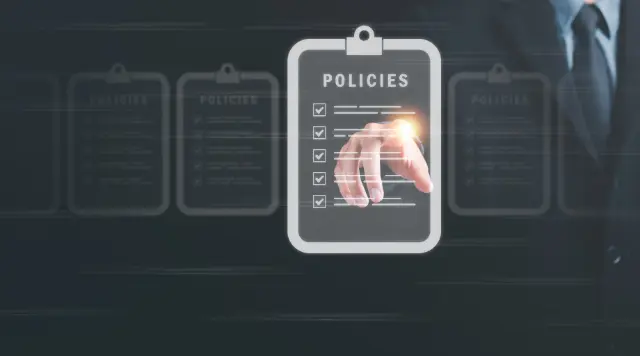Empowering Insurance Providers with Intelligent Policy Documentation Automation
Introduction
In the competitive and ever-evolving insurance industry, the efficient and accurate creation and distribution of policy documents is paramount for ensuring compliance and customer satisfaction. Policy Documentation Automation leverages the power of Python, AI, and cloud-based solutions to streamline this critical process, empowering insurance providers to achieve greater efficiency, accuracy, and compliance.
By automating the generation and dissemination of policy documents, insurers can eliminate manual errors, reduce processing time, and ensure consistency across all documentation. This not only enhances operational efficiency but also improves the customer experience by providing clear and easily accessible policy information. Moreover, automated Policy Documentation Automation facilitates regulatory compliance, ensuring that all documentation meets the latest industry standards and regulations.

The Symphony of Python, AI, and Cloud for Seamless Policy Documentation Automation
Python, AI, and cloud-based solutions form a powerful trifecta for Policy Documentation Automation. Here’s how each component contributes to the process:
Python: The Orchestrator of Automation
Python’s versatility and extensive library ecosystem make it an ideal choice for developing unattended bots that can automate repetitive tasks such as data extraction, document generation, and distribution. These bots can operate 24/7, eliminating the need for manual intervention and ensuring consistent execution.
Additionally, Python’s ease of use and rich set of tools enable the creation of attended bots that assist insurance professionals in completing complex tasks. These bots provide real-time guidance, automate data entry, and offer suggestions based on pre-defined rules. The level of customization available in Python allows for tailored solutions that cater to specific business requirements.
Cloud Platforms: The Orchestrators
Cloud platforms offer a comprehensive suite of automation capabilities that surpass traditional RPA/workflow tools. Their scalability, flexibility, and advanced features make them ideal for orchestrating complex automation workflows involving multiple systems and data sources.
Cloud platforms provide:
- Centralized management and monitoring of automation processes
- Integration with a wide range of applications and services
- Access to pre-built connectors and templates for common automation tasks
- Advanced analytics and reporting capabilities for tracking and optimizing automation performance
AI: The Catalyst for Accuracy and Efficiency
AI techniques such as image recognition, natural language processing (NLP), and generative AI play a crucial role in enhancing the accuracy and efficiency of Policy Documentation Automation.
- Image recognition can automate the extraction of data from scanned documents, reducing manual errors and expediting processing time.
- NLP enables the automated analysis and interpretation of policy language, ensuring compliance with regulatory requirements and improving the accuracy of document generation.
- Generative AI can assist in the creation of personalized policy documents by automatically generating tailored content based on customer-specific data.
By leveraging the combined power of Python, AI, and cloud platforms, insurance providers can achieve unprecedented levels of efficiency, accuracy, and compliance in their policy documentation processes.

Crafting the Automation Blueprint: A Step-by-Step Guide
The Policy Documentation Automation process involves several key sub-processes that can be automated using Python and cloud-based solutions:
-
Data Extraction: Python’s powerful data extraction capabilities can be leveraged to extract relevant data from various sources, such as customer applications, policy documents, and regulatory databases. This data can then be used to populate policy documents automatically.
-
Document Generation: Using Python’s templating libraries and cloud-based document generation services, insurance providers can automate the creation of personalized policy documents based on the extracted data. This ensures consistency and accuracy in document formatting and content.
-
Distribution and Storage: Automated workflows can be established using cloud platforms to distribute policy documents to customers, agents, and regulatory authorities securely and efficiently. Cloud storage services provide a centralized repository for storing and managing all policy-related documents.
Data security and compliance are of paramount importance in the insurance industry. Python’s robust security features and cloud platforms’ compliance certifications ensure that sensitive policy data is handled securely and in accordance with industry regulations.
Advantages of Python over No-Code RPA/Workflow Tools:
- Flexibility and Customization: Python’s open-source nature and extensive library ecosystem provide unparalleled flexibility and customization options, allowing for tailored solutions that meet specific business requirements.
- Scalability and Performance: Python’s scalability and performance capabilities enable the automation of complex workflows involving large volumes of data and multiple systems.
- Cost-Effectiveness: Compared to proprietary RPA/workflow tools, Python is a cost-effective option, especially for large-scale automation projects.
Algorythum’s Approach:
Algorythum takes a unique approach to Policy Documentation Automation by leveraging Python and cloud-based solutions. This approach addresses the limitations of off-the-shelf RPA/workflow tools, which often lack the flexibility, scalability, and performance required for complex insurance processes. By partnering with Algorythum, insurance providers can harness the power of Python and cloud to achieve unparalleled efficiency, accuracy, and compliance in their policy documentation processes.

A Glimpse into the Future of Policy Documentation Automation
The convergence of Python, AI, and cloud technologies is rapidly transforming the insurance industry. As these technologies continue to evolve, we can expect to see even more innovative applications of Policy Documentation Automation.
Potential Future Enhancements:
- Blockchain Integration: Integrating blockchain technology can enhance the security and immutability of policy documents, providing a tamper-proof record of transactions and interactions.
- Conversational AI: Incorporating conversational AI capabilities into automated workflows can enable insurance providers to offer personalized guidance and support to customers and agents.
- Predictive Analytics: Leveraging predictive analytics can help insurers identify potential risks and tailor policy recommendations based on individual customer profiles.
Subscribe and Connect:
To stay abreast of the latest advancements in Policy Documentation Automation and other industry-specific automation solutions, subscribe to our newsletter.
For a complimentary feasibility assessment and cost estimate tailored to your unique requirements, contact our team of experts today. Together, we can unlock the full potential of automation to transform your insurance operations.

Algorythum – Your Partner in Automations and Beyond
At Algorythum, we specialize in crafting custom RPA solutions with Python, specifically tailored to your industry. We break free from the limitations of off-the-shelf tools, offering:
- A team of Automation & DevSecOps Experts: Deeply experienced in building scalable and efficient automation solutions for various businesses in all industries.
- Reduced Automation Maintenance Costs: Our code is clear, maintainable, and minimizes future upkeep expenses (up to 90% reduction compared to platforms).
- Future-Proof Solutions: You own the code, ensuring flexibility and adaptability as your processes and regulations evolve.









